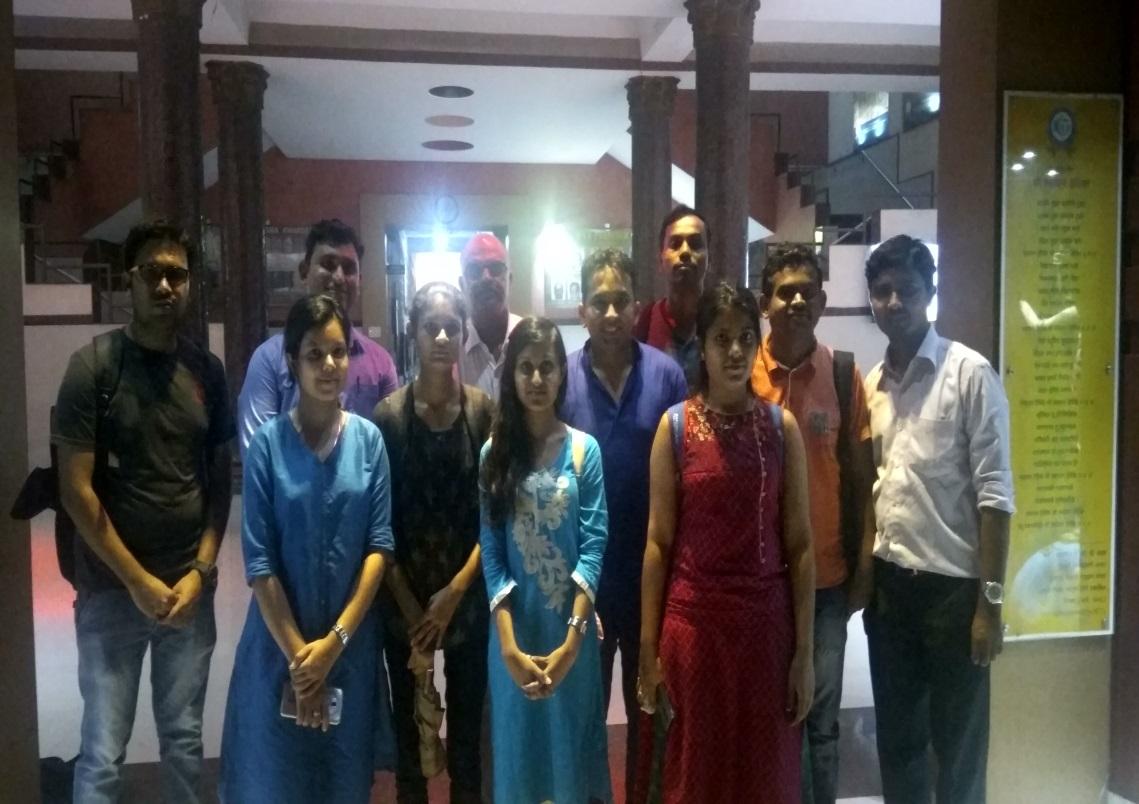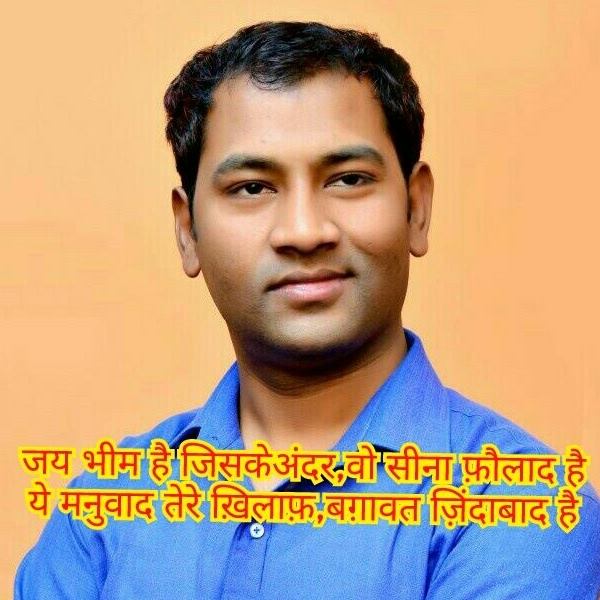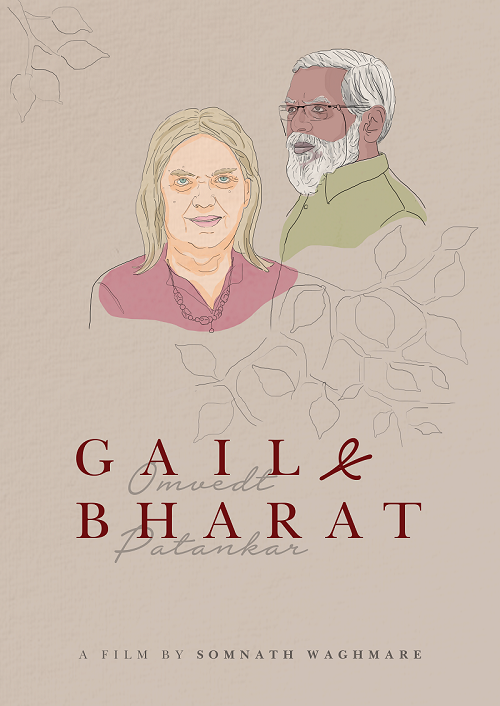Atul Anand
 When a testimony of Sunita Manjule appeared on an English news portal in the first week of June[1] about domestic violence and abuses by her ex-husband Nagraj Manjule, it shocked a lot of people. I was one of the people who believed there would be a huge backlash in media against Nagraj Manjule. That belief was gone very soon. Though, I still believe that the brahminical media which has nominal or no representation of Dalits and Bahujans, is biased while reporting the issues of the marginalised. There have been two different media surveys by Media Study Group and Janvikalp, which showed that around 90% of the media jobs in Delhi and Bihar are held by the Brahmins and other upper castes such as Rajput, Bhumihar, Kayastha, etc.[2] Majority of which is men from the upper castes. This statistics is worse in the case of representation in decision-making positions in the media organisations. The institution of media follows the caste hierarchy too. The brahminical media denies existence of caste and it selectively chooses to discuss reservations, vote bank politics or certain atrocity cases whenever that is ‘news worthy’.
When a testimony of Sunita Manjule appeared on an English news portal in the first week of June[1] about domestic violence and abuses by her ex-husband Nagraj Manjule, it shocked a lot of people. I was one of the people who believed there would be a huge backlash in media against Nagraj Manjule. That belief was gone very soon. Though, I still believe that the brahminical media which has nominal or no representation of Dalits and Bahujans, is biased while reporting the issues of the marginalised. There have been two different media surveys by Media Study Group and Janvikalp, which showed that around 90% of the media jobs in Delhi and Bihar are held by the Brahmins and other upper castes such as Rajput, Bhumihar, Kayastha, etc.[2] Majority of which is men from the upper castes. This statistics is worse in the case of representation in decision-making positions in the media organisations. The institution of media follows the caste hierarchy too. The brahminical media denies existence of caste and it selectively chooses to discuss reservations, vote bank politics or certain atrocity cases whenever that is ‘news worthy’.
However, it was different in Nagraj Manjule’s case. The brahminical institutions, which are inherently patriarchal, benefit the men from different castes when it comes to the issue of gender. The testimony of Sunita Manjule shows that these institutions favoured Nagraj Manjule, from the treatment in his extended family to the divorce case. On social media, a lot of self-proclaimed anti-caste people gave their entire attention to the media which carried the article than the issue itself. Even if the article appeared on a savarna media platform, it was still a testimony by Sunita Manjule. There were many attempts to trivialize the issue. The savarna media was compared to ‘Khap’ which victimised Nagraj Manjule. It was ironic. Since when have ‘Khap’ been helping women to bring out their issues? A lot of other people called out this hypocrisy, most of them were Dalit-Bahujan women. Christina T Dhanaraj wrote on her social media account, “…if this happens to me or my Dalit sister, daughter or a friend; and if I do find an opportunity that comes in the form of a newspaper or a website or a blog; and if I do muster up the courage to tell my horrible truth; then I can be sure of only one thing: I have to fight and I have to fight alone.” Rama Hansraj commented, “Dalit women who raise their voice or open up about the violence are either branded as opportunists or heartless bitches, over-punishing the great man who struggled his way up.”
It has been more than a month since the article was published but there have been no big media outrage against Nagraj Manjule. Meanwhile, a savarna magazine of ‘long-form narrative journalism’ carried an article on its website.[3] It largely explored the casteist nature of the criticism against Nagraj Manjule but it didn’t address the issue of gender. It appeared to be a defence of Manjule. Ajinkya Chandanshive, an MPhil student at TISS, makes an important observation on Nagraj Manjule’s Sairat, citing it as a movie which didn’t question brahminical values, “Capitalist and Brahmanical production [Sairat] was considered as Dalit assertion and it was very much praised by Brahmanical media because it was against Marathas and not against Brahmins.” How many Dalit-Bahujan women are there in the institutions such as academia, judiciary, media, etc?
This piece is not only about Nagraj Manjule. I am more interested in our responses to the issues of gender here. This is a personal reflection which started more than a year ago. There is a grave risk in privileging caste over gender and the refusal to see it as the interplay of the two. This leads to a politics which encourages one to mock gender issues while also claiming to be an anti-caste person. This politics leaves no room for a discussion on gender. It is arrogant and it demands unconditional support from Dalit-Bahujan women to ‘anti-caste’ causes. This politics is particularly bad for the young people. I have been affected by this politics too. I am not writing this to take a moral high ground. I cannot possibly do that. I am trying to understand a problem which implicates me too. I have been of the opinion that one can’t be anti-caste or an Ambedkarite while denying gender oppression. It’s also true that a lot of us, who claims to be an anti-caste person, choose to ignore and even take part in gender oppression.
I was a supporter of the Mahishasura movement, which claims to do the re-interpretation of the history. There have been explanations of casteist and misogynist brahminical Hindu festivals from various scholars but the way the Mahishasura movement has been shaped in the North India, is a male dominant one. I did notice the misogynist approach in a lot of literature which questioned the character of Durga more than the brahminical hegemony. I had stopped believing Brahmin myths but I became a supporter of the Mahishasura movement because of its potential to challenge the dominant brahminical narrative. I also started to oversee the inherent misogyny and male dominance in the movement. It struck me when I fiercely defended the Mahishasura movement in a debate on a social media post with a Bahujan woman around 9 months ago. I went on to use an Adivasi woman’s argument to counter hers. I had completely fallen into the trap of expecting Bahujan women to be loyal to this cause.
I would also like to talk about another example. I knew a Brahmin man through social media. He has been a front-runner of ‘anti-caste’ activism on social media. He would message me about what should I comment in response to someone on a particular post. At times, he would intervene himself if he found me going ‘gentle’ on someone, especially in the cases of Brahmin men and women. I found it odd but I had respect for him. When I try to reflect now, it makes me wonder if that respect was there just because he was supposed to be an ‘ally’ to the ‘anti-caste’ movement. A mere acknowledgement of his Brahmin privilege and that would place him at the centre of the anti-caste politics. Almost a year ago in a debate on social media, the ‘ally’ said that he believes in the idea of privileging caste over gender and all other issues. The debate was in the context of gender hierarchies. It was the time when I started to doubt the intentions of such claims and articulations. That incident showed how a Brahmin man uses ‘anti-caste’ politics to shield himself from the questions of caste and to flatten the gender hierarchies. He wouldn’t be an ally to the anti-caste politics, instead he would encourage a politics which denies gender injustice across castes and within caste groups. The hegemonic feminism of the savarna feminists which erases caste issue from their discourse, allows a Brahmin man to fill the gap with his equally reprehensible politics of erasing gender. It alienates Bahujans and anti-caste activists from the issues of gender.
There is another deep seated issue here. I can say from my experience and of few friends that we seek validation from Brahmins, especially from the Brahmin men. This is one of the characteristics of the caste system that Babasaheb Ambedkar refers as ‘an ascending scale of reverence’. [4] We were made to emulate that topper in the class who would happen to be a Brahmin, a Bhumihar, a Rajput, or a Kayastha boy most of the time. I am not using this example to shift the entire blame to the upper caste men. It is possible that in patriarchy, Brahmin and Bahujan men can be ‘allies’, though not the equal ones.
Recently, I have seen many young people falling into the same trap of overlooking gender issue. I avoided writing this article for long, thinking if I would be the right person to talk about it. A friend told me that it’s good to be reflective but not too self-critical that stops you. I believe I have used this opportunity to be reflective and not to articulate on the behalf of Bahujan women.
We cannot fight one form of injustice while overlooking another. We must not forget the true anti-caste legacy of Savitribai Phule, Fatima Sheikh, Jyotiba Phule, Ayyankali, Babasaheb Ambedkar, etc which has been about gender too. There are fatal flaws to every movement where some crucial issues are excluded deliberately: Left movements being exclusive of caste and gender, savarna hegemonic feminism being exclusive of caste and class, the Queer movement having the similar problems, etc. So, we must not allow erasure of gender to be the fatal flaw of the anti-caste movement.
I acknowledge the conversations I had with friends over the last 3 years, especially the last few weeks, which helped me to write this article.
Notes
[1] Exclusive: ‘Sairat’ Director’s Ex-Wife Tells Her Story of Abuse, The Quint, June 07, 2016 http://www.thequint.com/women/2016/06/07/sairat-director-nagraj-manjules-wife-sunita-accuses-domestic-abuse, accessed on July 20, 2016.
[2] Share on Back Benches: A Survey on Social background of Bihar’s media institutions, Janvikalp, http://janvikalp.wordpress.com/2013/04/20/share-on-back-benches-a-survey-on-social-background-of-bihars-media-institutions, accessed on July 20, 2016.
[3] Wild Bias, The Caravan, July 01, 2016, http://www.caravanmagazine.in/perspectives/wild-bias-casteism-backlash-sairat, accessed on July 22, 2016.
[4] Indian Round Table Conference, 12th November, 1930-19th January 1931: Proceedings, Government of India, Central Publication Branch, Calcutta, 1931, p. 439.
~~~
Atul Anand holds a postgraduate degree in Media and Cultural Studies from Tata Institute of Social Sciences, Mumbai. He currently works as a research fellow for a study on labour migration in India.










